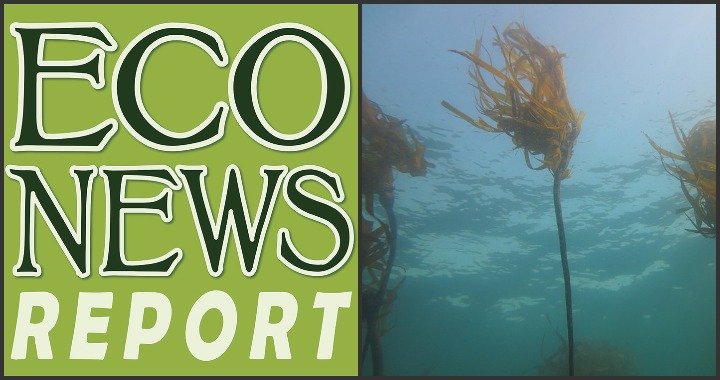
A bull kelp forest near Caspar in 2017. Photo: Chris Teague, via iNaturalist. Creative Commons license.
###
The destruction of the North Coast’s redwood forests is well known to EcoNews listeners, but did you know about the loss of our kelp forests?
Gang Green sits down with James Ray, a scientist with the California Department of Fish & Wildlife, who studies bull kelp populations along the North Coast. James talks about the marine heat wave in 2014 and the resulting 90% decline in bull kelp, in part due to an explosion in purple urchins, which have overgrazed some bull kelp beds into oblivion. The purple urchin used to be kept in check by sunflower sea stars, but bad news: in 2013, a wasting disease killed 90% of sunflower sea stars along the West Coast from Mexico to Alaska.
Is there any hope for our coastal kelp forests? James and his colleagues have seen some slight increases in some kelp beds, giving a glimmer of hope that this foundational species to the marine ecosystem could eventually recover even in the absence of sunflower sea stars.
AUDIO:
“The EcoNews Report,” Nov. 6, 2021
REQUIRED READING:
- New research to address kelp forest crisis in California - California Sea Grant
- Kelpwatch - an interactive kelp mapping tool that uses Landsat satellite data to display kelp canopy coverage throughout the state (2021 data coming soon)
- Kelp Forests Surge Back on Parts of the North Coast, with a Lesson About Environmental Stability - Bay Nature
- Iconic Sea Star Listed Critically Endangered After Study Finds Marine Epidemic Event Nearly Wiped Out Global Population - The Nature Conservancy
- Restoring Kelp in the Face of Climate Change - Humboldt Now
CLICK TO MANAGE